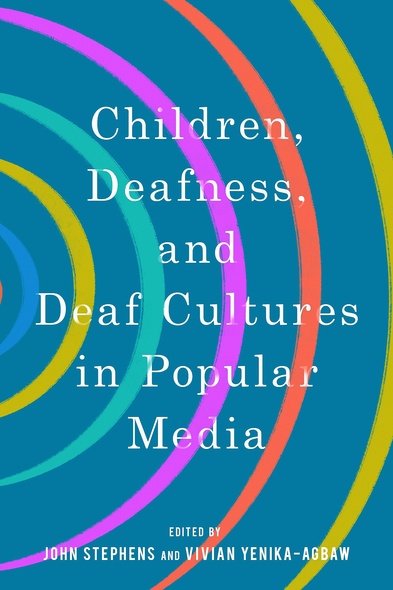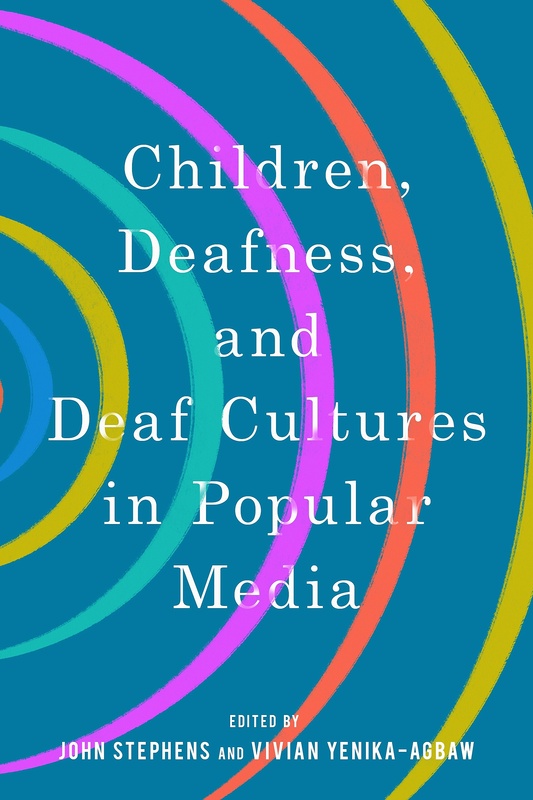
Children, Deafness, and Deaf Cultures in Popular Media
Contributions by Cynthia Neese Bailes, Nina Batt, Lijun Bi, Hélène Charderon, Stuart Ching, Helene Ehriander, Xiangshu Fang, Sara Kersten-Parish, Helen Kilpatrick, Jessica Kirkness, Sung-Ae Lee, Jann Pataray-Ching, Angela Schill, Josh Simpson, John Stephens, Corinne Walsh, Nerida Wayland, and Vivian Yenika-Agbaw
Children, Deafness, and Deaf Cultures in Popular Media examines how creative works have depicted what it means to be a deaf or hard of hearing child in the modern world. In this collection of critical essays, scholars discuss works that cover wide-ranging subjects and themes: growing up deaf in a hearing world, stigmas associated with deafness, rival modes of communication, friendship and discrimination, intergenerational tensions between hearing and nonhearing family members, and the complications of establishing self-identity in increasingly complex societies. Contributors explore most of the major genres of children’s literature and film, including realistic fiction, particularly young adult novels, as well as works that make deft use of humor and parody. Further, scholars consider the expressive power of multimodal forms such as graphic novel and film to depict experience from the perspective of children.
Representation of the point of view of child characters is central to this body of work and to the intersections of deafness with discourses of diversity and social justice. The child point of view supports a subtle advocacy of a wider understanding of the multiple ways of being D/deaf and the capacity of D/deaf children to give meaning to their unique experiences, especially as they find themselves moving between hearing and Deaf communities. These essays will alert scholars of children’s literature, as well as the reading public, to the many representations of deafness that, like deafness itself, pervade all cultures and are not limited to specific racial or sociocultural groups.
The editors of the present collection harness literature’s power by gathering essays that explore how children’s texts—novels, graphic novels, picture books, films, creative nonfiction, auto-ethnographies—portray being Deaf in a nonclinical, humanistic fashion. Recommended.
it is informative and illuminating; . . . Recommended for those who are interested in the field of disability studies, in particular the d/Deaf community.
Children, Deafness, and Deaf Cultures in Popular Media breaks exciting new ground by extending literary deaf studies to children’s literature. It offers an engrossing look at diverse representations from around the world.
John Stephens is former president of the International Research Society for Children’s Literature and foundation editor of International Research in Children’s Literature (2008–2016). In 2007 he received the 11th International Brothers Grimm Award and in 2013 the Anne Deveraux Jordan Award, both given to recognize significant contributions to the field of children’s literature in scholarship and service. He is author of several books and over a hundred articles. Vivian Yenika-Agbaw (1959–2021) was professor of literature and literacies at the Pennsylvania State University, University Park. A former middle and high school teacher, she authored and coedited several books and over seventy articles and book chapters. A former IRSCL board member (2017–2019), she was inaugural chair of the IRSCL Equity and Diversity Committee (EDC).





